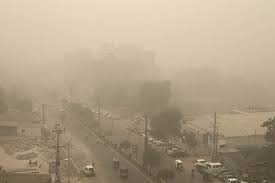Authorities in Punjab’s big cities including Rawalpindi, Faisalabad and Multan, are steadily winning the battle against air pollution and smog. Measures they took to ensure clean air, are finally yielding results.
“We are winning the battle against smog and air pollution. Steps we took to ensure clean air, are bearing fruit. Sadly, the government in the past didn’t take this issue seriously which brought us into a situation. However, things are moving and the air quality index in major cities is improving slowly but steadily,” Hasaan Khawar, spokesperson of Punjab government told Gwadar Pro in a telephone interview from Lahore.
Soon after coming into power in July 2018, Prime Minister Imran Khan unleashed war against pollution by kicking off a campaign to plant one billion trees across Pakistan. Insiders said the idea to plant one billion trees across the country was derived from China’s ‘Afforestation and Reforestation’ programmes as a part of which billions of trees were planted across China’s 12 provinces.
Impressed by China’s programme of ‘Three-year Action Plan for Winning the Blue Sky War’, the provincial government of Punjab, Pakistan’s populous province, took measures on war footing to clear its cities of pollution which included shifting of brick kilns on Zig Zag technology and regular inspection of industrial estates to make sure factories are complying with international standards.
“Brick kilns are one of the major sources of air pollution in Pakistan. We have introduced zig zag technology to make them environment friendly. So far, 37 per cent of brick kilns in Pakistan’s Punjab province have been shifted to eco-friendly zig-zag technology while the remaining have been sealed till they adopt the new method. Similarly, three teams comprising of officials from police and officials of Ministry of Environment have been constituted to keep a check on factories and mills to make sure they do not harm air quality,” Hasaan Khawar said.
Khawar added that the majority of cities of Punjab including Lahore, the provincial capital, and face serious smog usually in winter, while the brick kilns having even more emissions than some of the factories are one of the major factors blamed for air pollution.
While the air quality index is improving in major cities of Punjab province, Lahore still lags.
Earlier on Monday this week, an air quality monitoring platform declared Lahore as the most polluted city in the world as the official air quality index (AQI) of Lahore was reported at 289 (as per the average between 9 am and 5 pm) and international monitoring bodies put the score at 397.
This has rung alarmed bells among 13 million residents who asked concerned authorities to find solutions even as the megacity remains blanketed in stagnant clouds of acrid smog. Lahore’s air quality has worsened in recent years due to low-grade diesel fumes and crop-burning. But authorities blame neighbouring India as the source of the pollution, claiming air-quality figures have been exaggerated.
“Crop-burning in neighbouring India remains a major source of smog/pollution in Lahore and adjacent cities. We have the evidence including thermal imaging,” Hasaan Khawar told Gwadar Pro. He added that the government of Punjab has identified activities causing air pollution including vehicles emitting visible smoke and pollutants falling into inadmissible limits; industries without emission control systems; stone crushers operating without wet scrubbers.
“Teams have been formed to keep a check on these activities. Heavy fines are being imposed on activities including burning of all types of solid waste, tires, rubber and plastics; sale and use of sub-standard fuels and smoke emitting vehicles on roads,” Mr Khawar added.
















